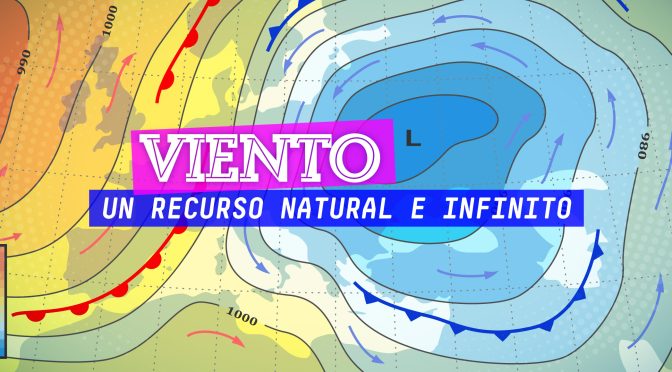We look for it on hot summer days and avoid it on cold winter days. We are talking about the wind, with which we have always had a love-hate relationship. There has also been an element of mystery and awe, even veneration in the case of the ancient world. Quetzalcoatl was the Aztecwind god, while Aeolus was the king of the winds who meets Ulysses in the Odyssey. And that veneration was understandable, given that rainfall depended on the wind, as did crops and the survival of livestock. The same was true of navigation and turbulence at sea; as well as the earliest form of mechanical wind power, namely windmills, with which grain was ground to produce flour for bread.
The importance of wind to human life has not changed – just think of wind power as an infinite source of renewable electricity – but our knowledge about the mechanisms that regulate its behavior is now far greater. And so: how is wind formed?
A question of high and low pressure
Wind is formed by pressure differences in the Earth’s atmosphere, which are in turn due to temperature differences. In actual fact, the Sun heats the Earth’s surface unevenly, creating areas of high and low pressure. Air always moves from areas of high pressure to areas of low pressure, thereby generating wind.
In order to better understand how wind is formed, let’s go back to a subject in high school physics: the study of fluids (liquids and gases) in motion, which is known as fluid dynamics. In fluid dynamics there is a fundamental principle: a fluid always moves from a high-pressure zone to a low-pressure zone.
Understanding the mechanism is very simple: take a balloon, fill your lungs with air and blow into it as hard as you can. The balloon will begin to inflate, and, the more you blow, the more the pressure will increase, because there will be more and more air molecules inside the balloon colliding with each other. If you let go of the balloon at some point, the air molecules will start to come out, because outside the balloon the pressure is less and there is far more space for them. In this way we have created the wind, which has moved from a high-pressure zone to a low-pressure zone.
What we have just described is the principle behind the formation of winds. Obviously, reality is far more complex, and there are other factors that contribute to the intensity and direction of winds. The most important include:
The Coriolis force, which is due to the Earth’s rotation and on which cyclonic and anticyclonic winds in the atmosphere depend.
There’s also the force of friction with the Earth’s surface and seas, which is all the greater when there are variations in altitude, such as mountain ranges or hills.
Where it makes sense to install a wind farm
So where does it make sense to install wind turbines to produce renewable energy? Contrary to what you might think, strong but inconstant gusts of wind are not useful: wind turbines need sustained but mostly constant wind. That is why the best areas are open spaces, such as the sea (companies and other organizations have in fact been building offshore wind farms for more than 30 years), where there is less friction between the air and water, and winds can blow continuously throughout the day; or large areas of flat land or plateaux with no obstacles around, such as islands which, not surprisingly, are among the most windy land areas.
And so, even if we want to avoid it sometimes, we will always go in search of the wind as it is a natural and infinite resource with enormous energy potential.


